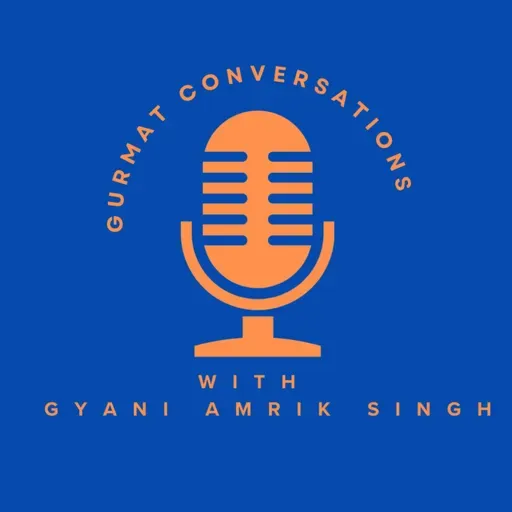
Ep 14: Inner Transformation (Ek Na Bharea Gun Kar Dhowan)
Gurmat Conversations with Gyani Amrik Singh
Waheguru Ji Ka Khalsa, Waheguru ji ki Fateh.
In this Shabad, Gyani Amrik Singh talked about this multi-Rahāo structure.This Shabad is actually a part of a longer composition where Guru Nanak Dev Ji uses metaphorical imagery to discuss spiritual impurity, ego, virtue, false rituals, and the necessity of inner realization through the Shabad (divine Word).
Unlike a regular short Shabad which typically contains one Rahāo to highlight the central theme, this composition is in Pauri form and contains multiple stanzas, each ending with a ‘Rahāo’ — specifically numbered 1 to 4.
This format is meant to pause and reflect after every key idea — essentially breaking the composition into four major spiritual contemplations. Each Rahāo is not a repetition or chorus (like in some hymns), but an independent reflective anchor for the preceding verses. multi-Rahāo structure serves to layer the listener’s reflection, not just reinforce one theme. Guru Nanak Dev Ji here is making a powerful critique of superficial religiosity and calls us to inner transformation through the Shabad. Each Rahāo acts as a gateway for introspection, which is why there are four.
Structure of the Four Rahāos in this Shabad:
1. Rahāo 1 – Emphasizes purity through the Shabad, not just outer acts or emotions.
2. Rahāo 2 – Contrasts external rituals (like bathing at pilgrimage sites) with the inner cleansing of ego.
3. Rahāo 3 – Points to divine grace and understanding that comes not from pride or performance, but surrender.
4. Rahāo 4 – Highlights the centrality of the Shabad as the true purifier and liberator. Here is the latest episode of Gurmat Conversations. Please listen and let me know what you think, if you would like to support future episodes, here is a donation link: https://www.paypal.com/donate/?hosted_button_id=LSEQVBVWX5LV8
⸻